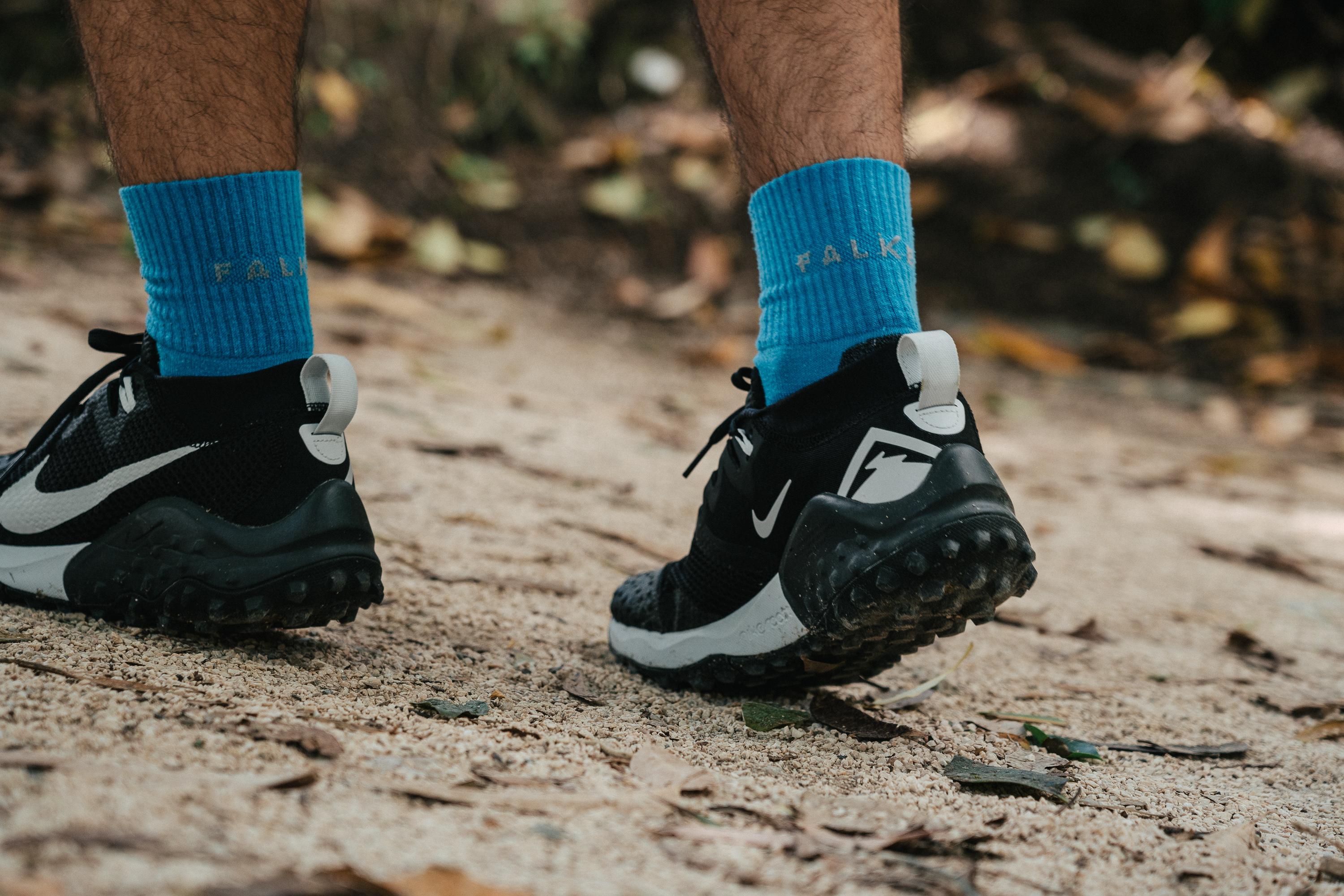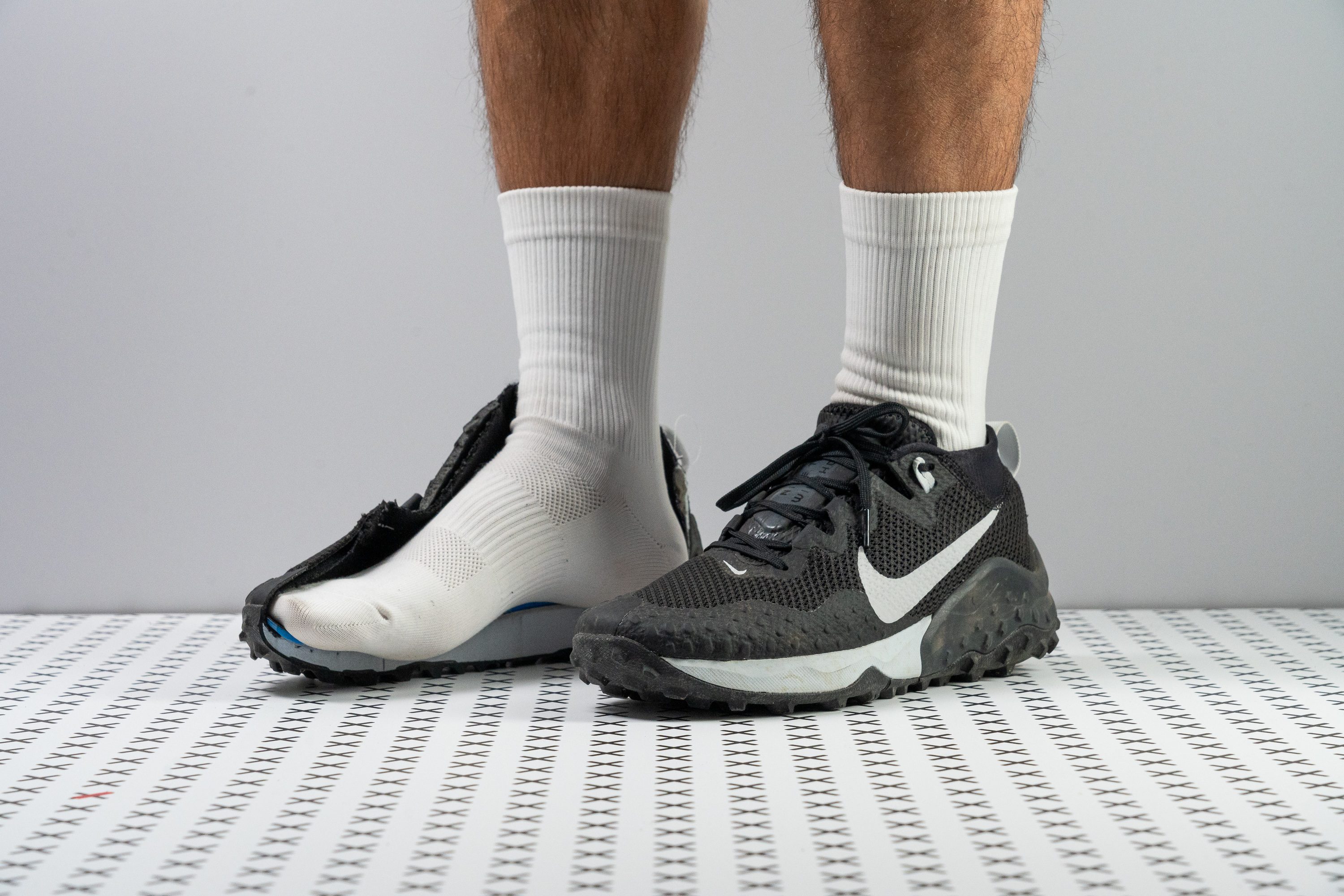Our verdict
Pros
- Superb grip in dry conditions
- Very rugged and protective
- Smooth transitions
- Perfect for losing trails & soft ground
- Pull tab that actually works
- True to size
- Great for hiking as well
- Awesome looks and colorways
- Perfect for colder days
Cons
- Runs hot
- Not for technical terrain
- Not for wet conditions
- Gaiters look better than they work
Audience verdict
Comparison
The most similar running shoes compared
+ + Add a shoe | |||||
|---|---|---|---|---|---|
| Audience score | 87 Great! | 91 Superb! | 88 Great! | 90 Superb! | |
| Price | $130 | $165 | $150 | $150 | |
| Trail terrain | LightModerate | LightModerate | LightModerate | ModerateTechnical | |
| Arch support | Neutral | Neutral | Neutral | Neutral | |
| Weight lab Weight brand | 11.2 oz / 318g 11 oz / 312g | 11 oz / 312g 11 oz / 311g | 9.9 oz / 282g 9.9 oz / 280g | 10.2 oz / 288g 10.1 oz / 286g | |
| Drop lab Drop brand | 7.3 mm 8.0 mm | 10.9 mm 9.5 mm | 6.0 mm 6.0 mm | 4.4 mm 3.0 mm | |
| Strike pattern | Mid/forefoot | Heel | Mid/forefoot | Mid/forefoot | |
| Size | True to size | True to size | Slightly small | True to size | |
| Midsole softness | - | Soft | Soft | Soft | |
| Difference in midsole softness in cold | - | Normal | Small | Normal | |
| Plate | Rock plate | Rock plate | Rock plate | ✗ | |
| Toebox durability | - | Very bad | Decent | Very good | |
| Heel padding durability | - | Good | Good | Decent | |
| Outsole durability | - | Decent | Good | - | |
| Breathability | - | Moderate | Moderate | Moderate | |
| Width / fit | Narrow | Medium | Medium | Medium | |
| Toebox width | - | Medium | Wide | Medium | |
| Stiffness | Stiff | Moderate | Stiff | Stiff | |
| Torsional rigidity | Moderate | Moderate | Flexible | Moderate | |
| Heel counter stiffness | Flexible | Moderate | Flexible | Moderate | |
| Lug depth | 4.2 mm | 3.4 mm | 3.9 mm | 4.4 mm | |
| Heel stack lab Heel stack brand | 33.5 mm 30.0 mm | 38.3 mm 38.0 mm | 30.1 mm 29.0 mm | 30.1 mm 31.0 mm | |
| Forefoot lab Forefoot brand | 26.2 mm 22.0 mm | 27.4 mm 28.5 mm | 24.1 mm 23.0 mm | 25.7 mm 28.0 mm | |
| Widths available | Normal | Normal | NormalWide | Normal | |
| Season | - | All seasons | All seasons | All seasons | |
| Removable insole | ✓ | ✓ | ✓ | ✓ | |
| Orthotic friendly | ✓ | ✓ | ✓ | ✓ | |
| Ranking | #343 Bottom 47% | #35 Top 10% | #140 Top 38% | #37 Top 11% | |
| Popularity | #507 Bottom 22% | #133 Top 37% | #326 Bottom 11% | #293 Bottom 20% |
Size and fit
Size
Nike Wildhorse 7 fits true to size (12 votes).
Who should buy Nike Wildhorse 7
This shoe is great if you always wanted:
- Extra protection (think lugs, semi-gaiters, overlays, rock plate),
- A cushioned trail shoe that is not so high off the ground so you still have a sense of the ground.
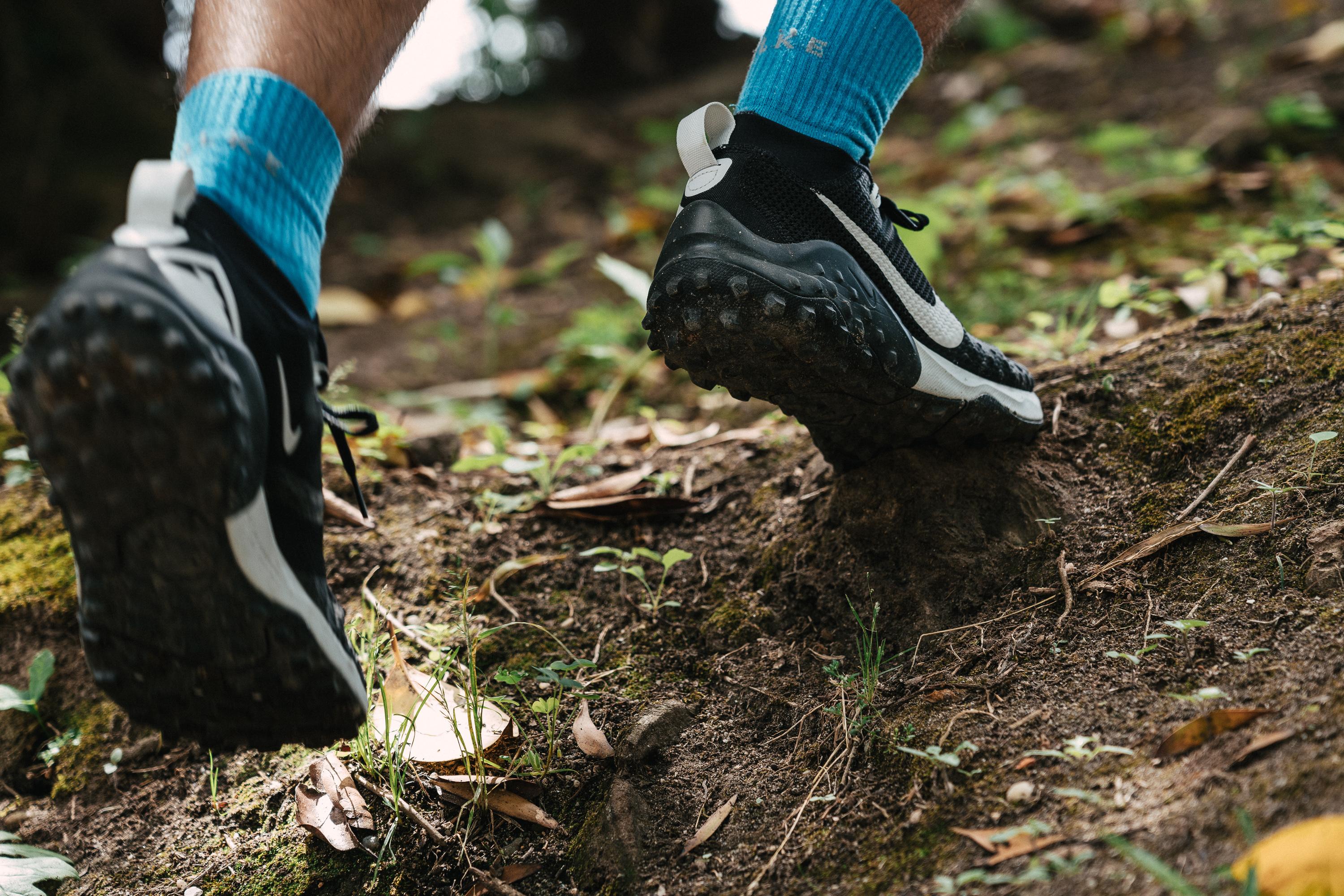
Who should not buy it
We recommend looking the other way if you want a:
- Lightweight trail running shoe (like Terra Kiger 9),
- Hybrid trail shoe with smaller lugs so your feet don’t ache (we suggest checking out the Nike Pegasus Trail 4) on roads or hard-packed transitions,
- Trail race shoe (look up Terra Kiger models, all the way).
Nike Wildhorse 7 works best on moderate runs
Moderate is like the middle name of the Wildhorse 7. Not for anything too technical, or too long, or too fast.
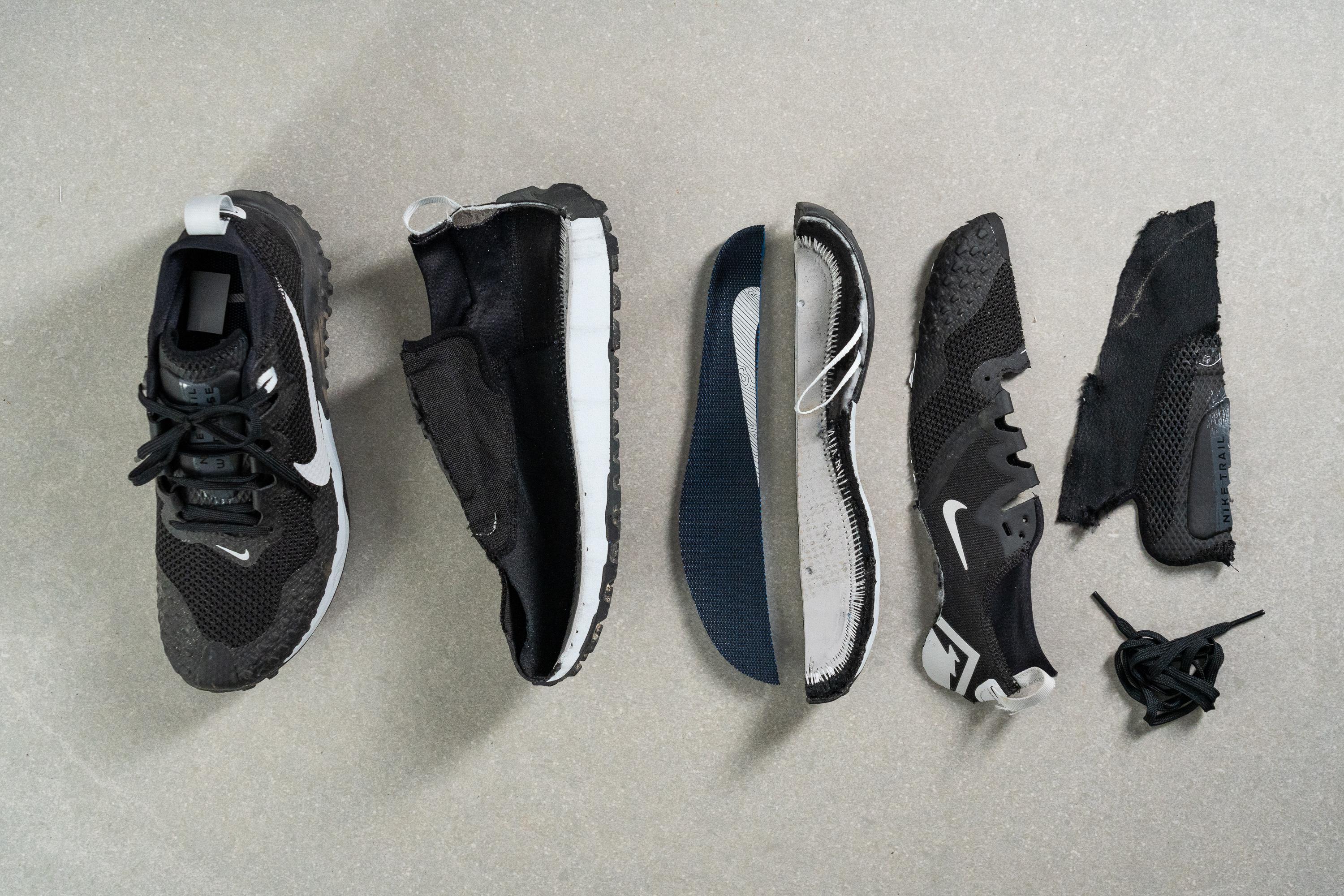
It shines on runs that are 5-15 miles long. It can take you further, but you will feel the weight.
Nike Wildhorse 7 has a good grip in dry conditions
As long as you don't take the Wildhorse 7 over the technical terrain, you are good.
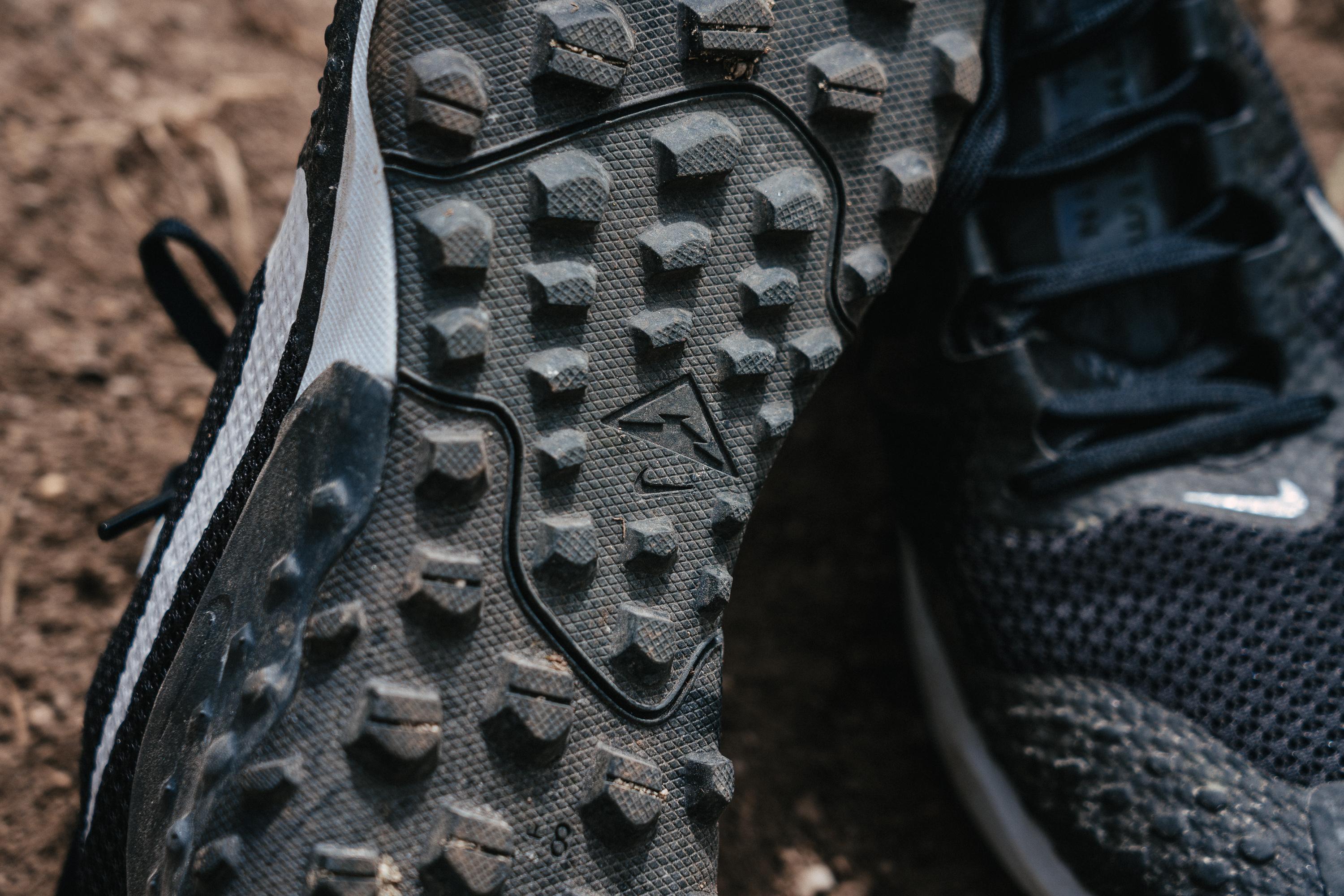
No wonder, given that the lugs are 4.2 mm deep! It is nearly a millimeter deeper than average.
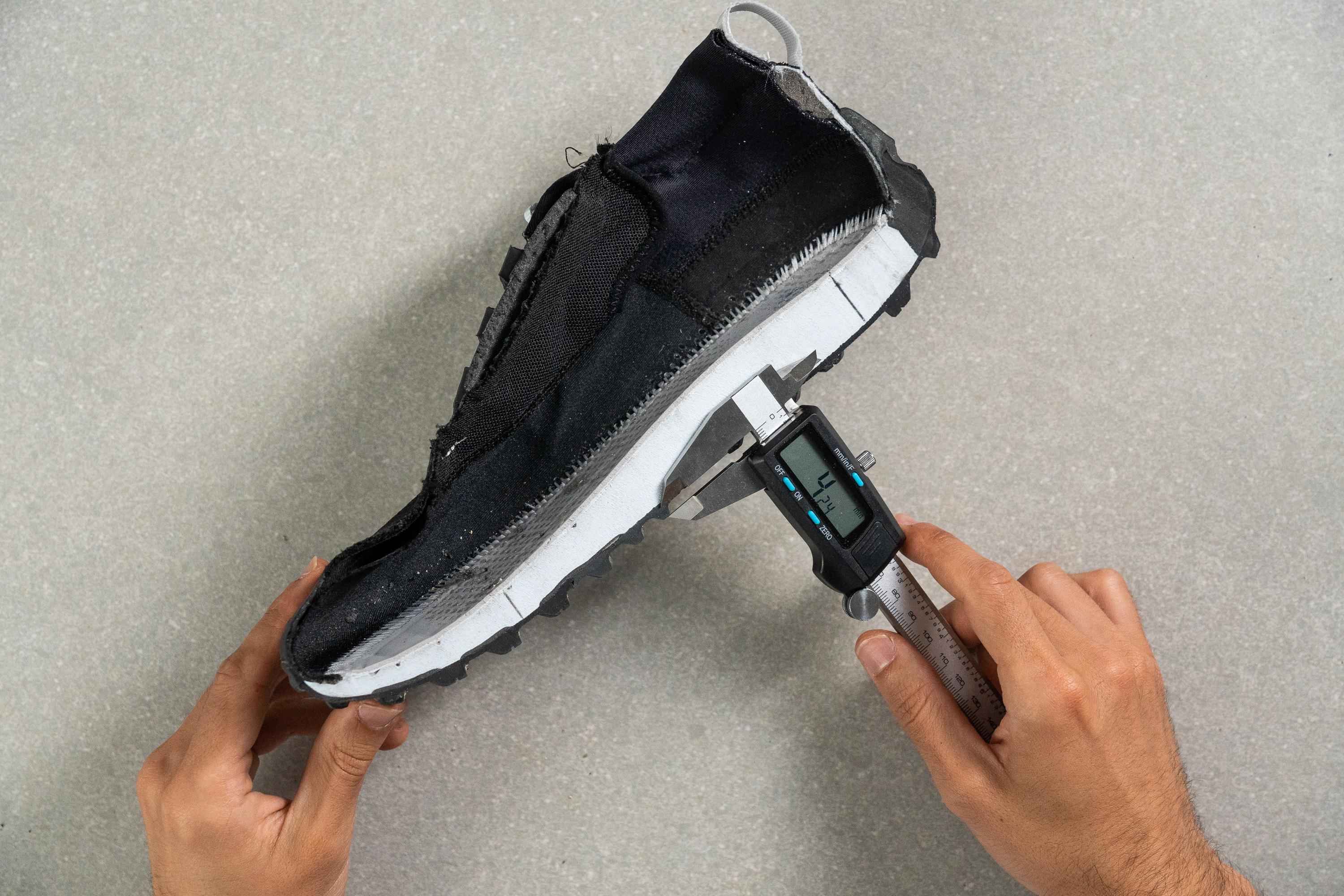
This all applies to the dry conditions. When it comes to wet surfaces, we found it to be quite alright but not better than a Salomon shoe with 5-mm lugs (think Speedcross 6).
Grip first, protection next
What you can also notice just by looking at the shoe is that it will keep your feet safe.
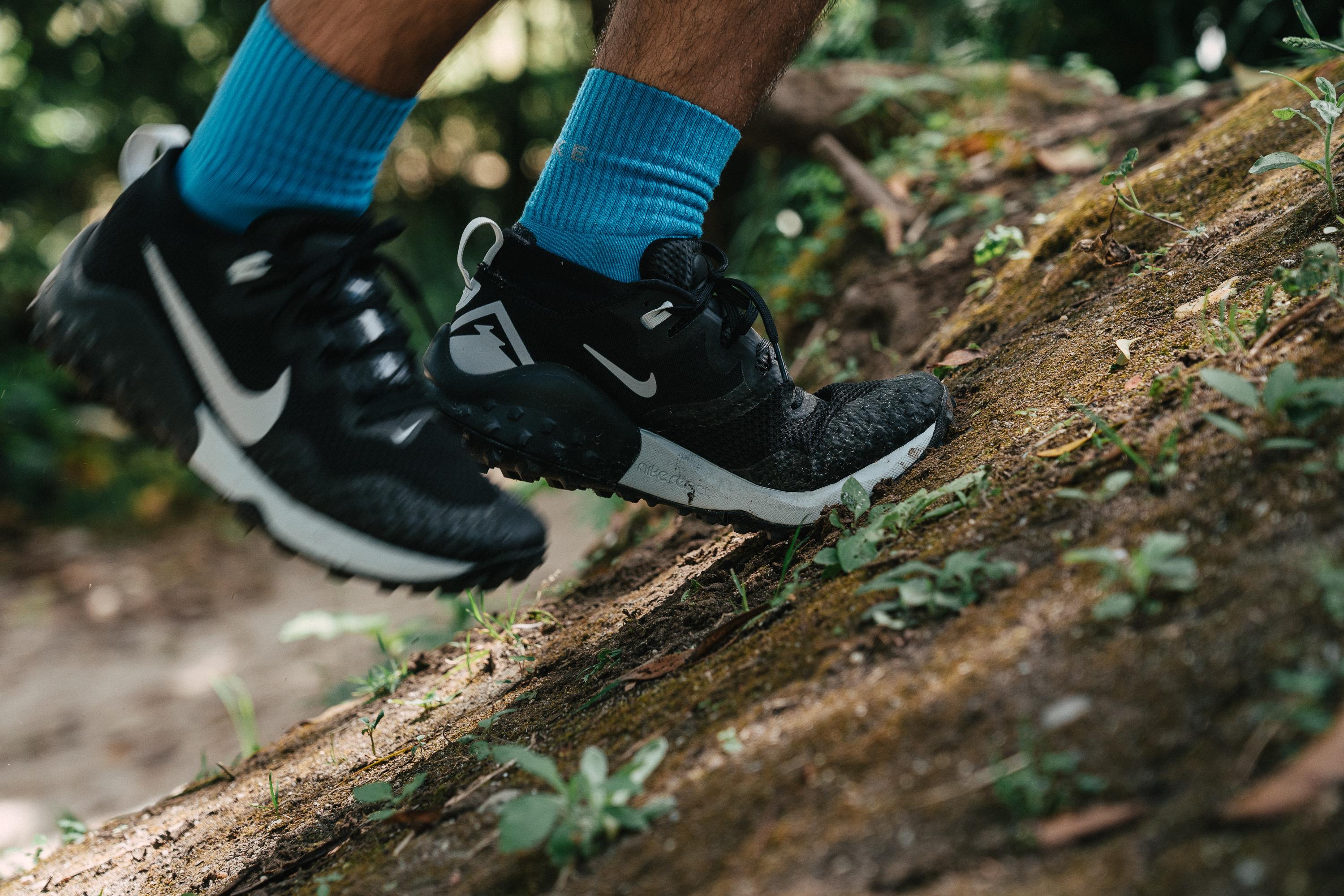
There are lugs and dots and dimples all over it. It screams trail and it screams it can do it. It can!!
It’s high-stacked and it has protective overlays on the upper. On the inside, there’s a rock plate so your feet don’t feel beaten up after the run.
Talking about high-stacked, the lab numbers confirm it is a bit higher than the average:
- 26.2mm at the forefoot
- 33.5mm at the heel
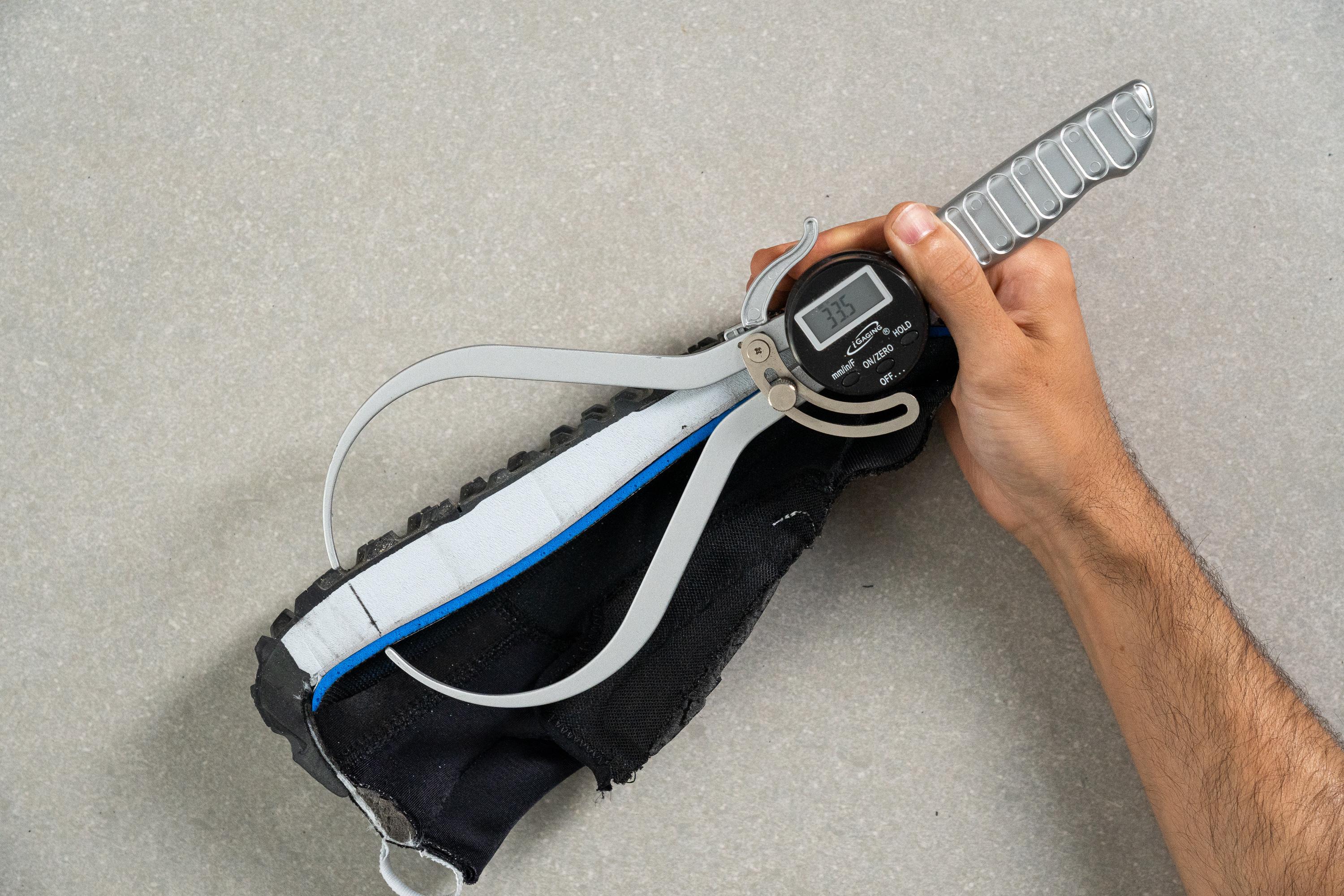
A cherry on top? You still have a decent ground feel!
Perfect lockdown
We've got no complaints of heel slipping or sliding within the shoe. Here is what helps to achieve that:
- The tongue is perfectly padded, there’s a glossy overlay that seems to offer extra protection,
- Laces have a perfect length and don’t untie during running,
- The upper in the midfoot area is really good, nothing is lacking, and nothing is out of place.
Not for technical terrain
3 reasons:
- The grip will fail you on wet sections.
- The segmented rock plate doesn't offer enough protection from sharp rocks.
- It's not stable enough on such terrain. We felt as though our feet were about to roll over.
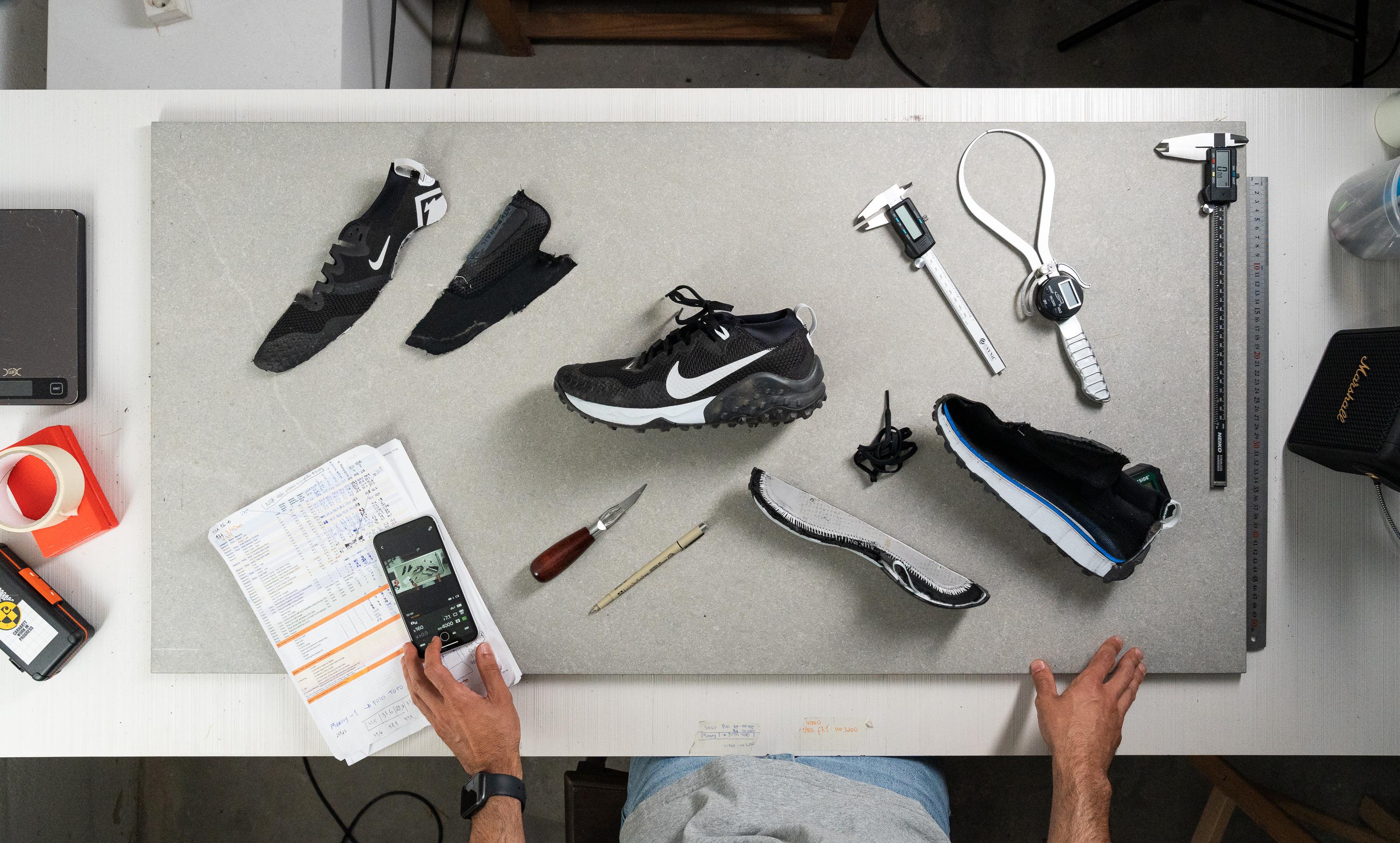
Our lab measurements have also confirmed the non-stability claims by looking at the base of the shoe: the width of the midsole at the forefoot is 105.7 mm (the average: 111.8mm), while the width of the heel is 88.5mm (the average: 89.1).
Even though it looks bulky with all the lugs on the sides and the heel, the Wildhorse 7 does not have such a wide base after all.
True to size but not for wider feet
Getting the right size is a no-brainer. What also works is fitting a bit wider forefoot in there.
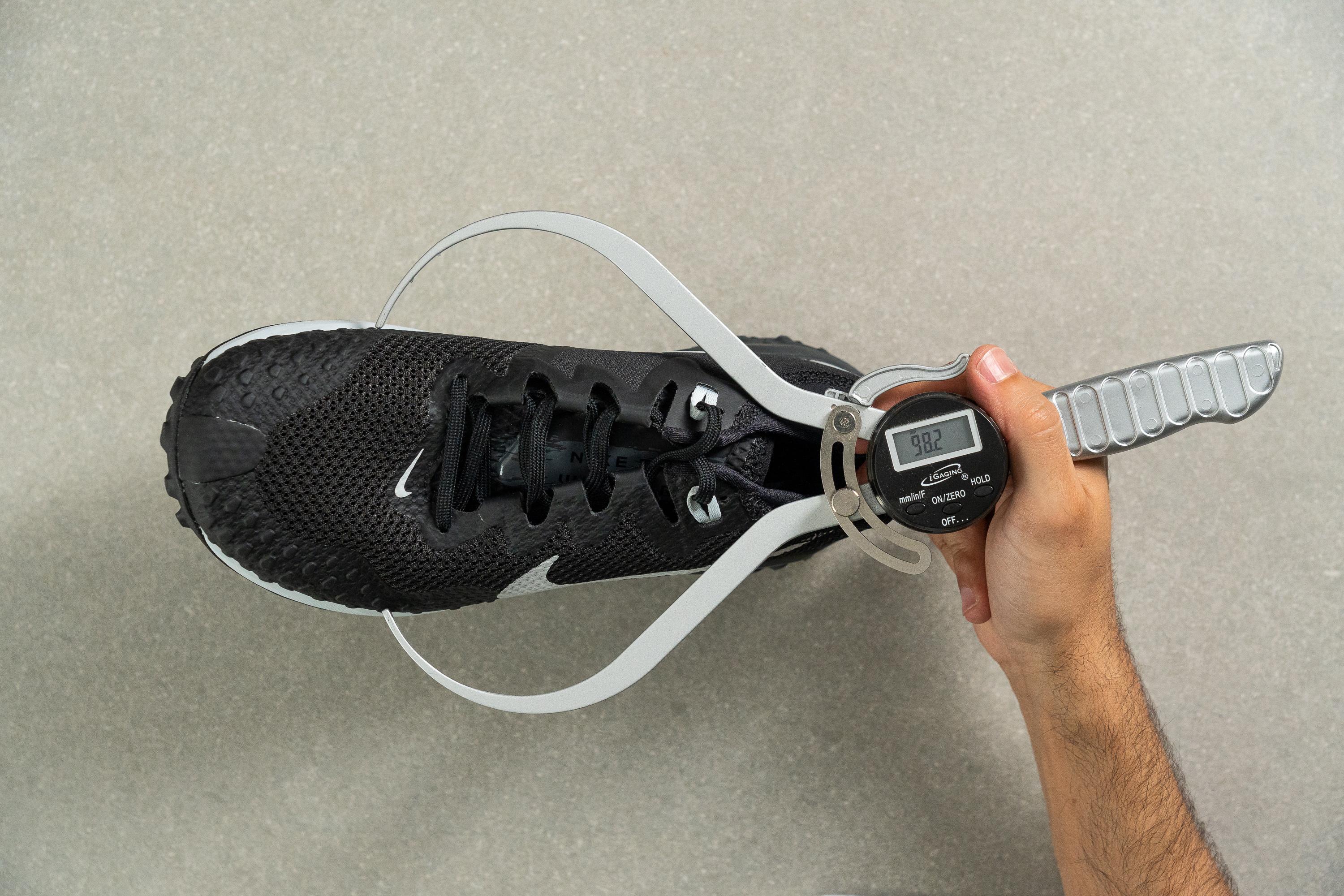
For reference, the width of the Wildhorse's forefoot is 98.2 mm which is very similar to the average width. It goes on to say that the upper does have a bit of a give.
However, wide-footed runners might not be able to do longer (15km+) runs in this shoe due to swelling. They could try Altra Lone Peak 7 as an alternative.
Might need some (very short) breaking in
There’s a first time for everything? Even for the heel and tongue that are too stiff. Padding on the inside of a heel is big and stiff. It literally feels like pinching but only at the beginning.
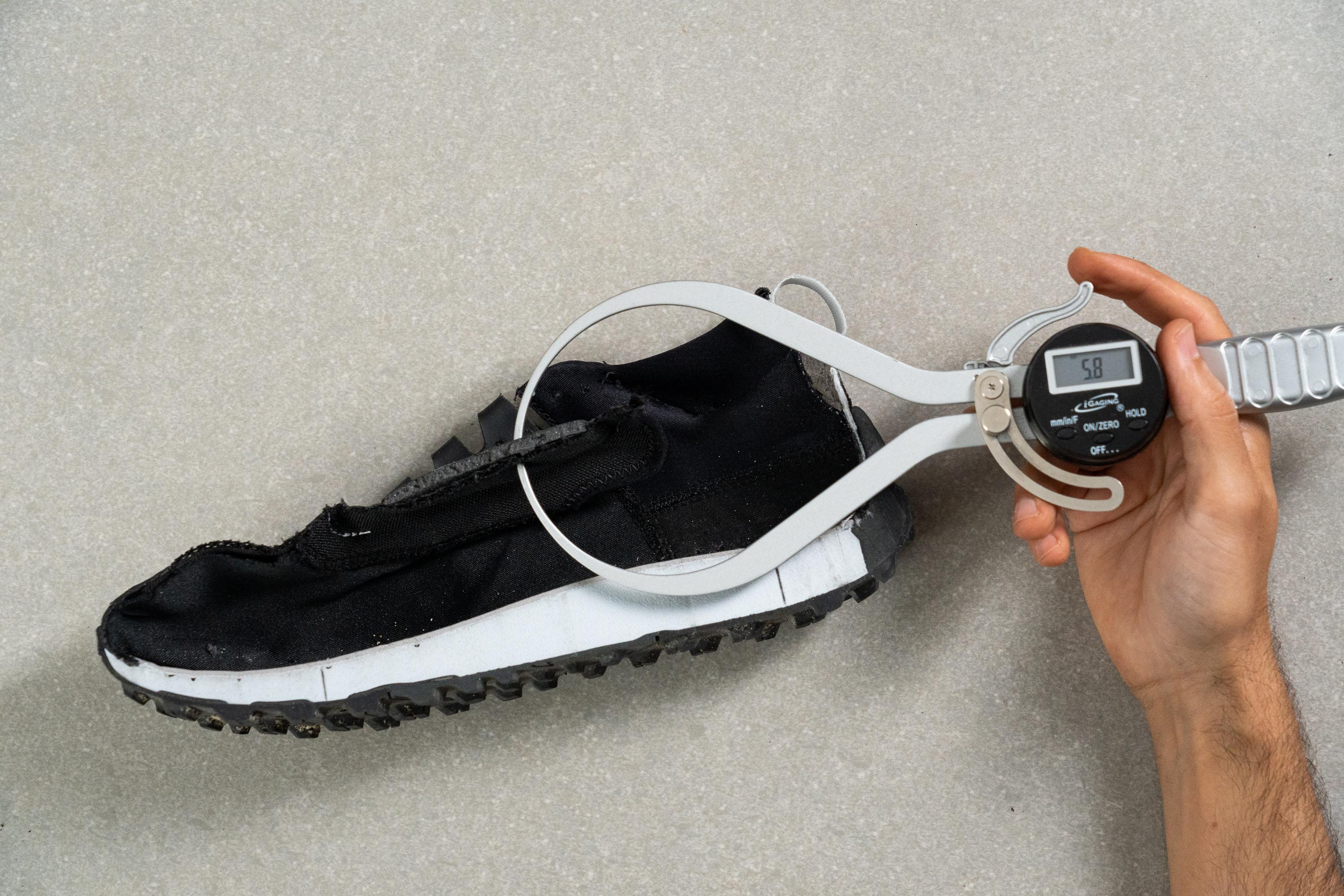
The tongue looks great and is so thick (5.8 mm, while the average in our lab is 6.2 mm) that it prevents the lace bite but the shiny part is a bit stiff and might cause cutting into the skin. Advice: don't wear low-cut socks on the first run.

The heel did break in and didn’t cause pain afterward. The tongue softened after 15 minutes of hiking and became REALLY good.
Great for cold temperatures
First, because it's not the most breathable shoe out there. Second, after spending some time in the freezer, the difference in flexibility (at room temperature vs freezer), the Wildhorse 7 scored at 22.5% which is less than the average change of 31.3%.
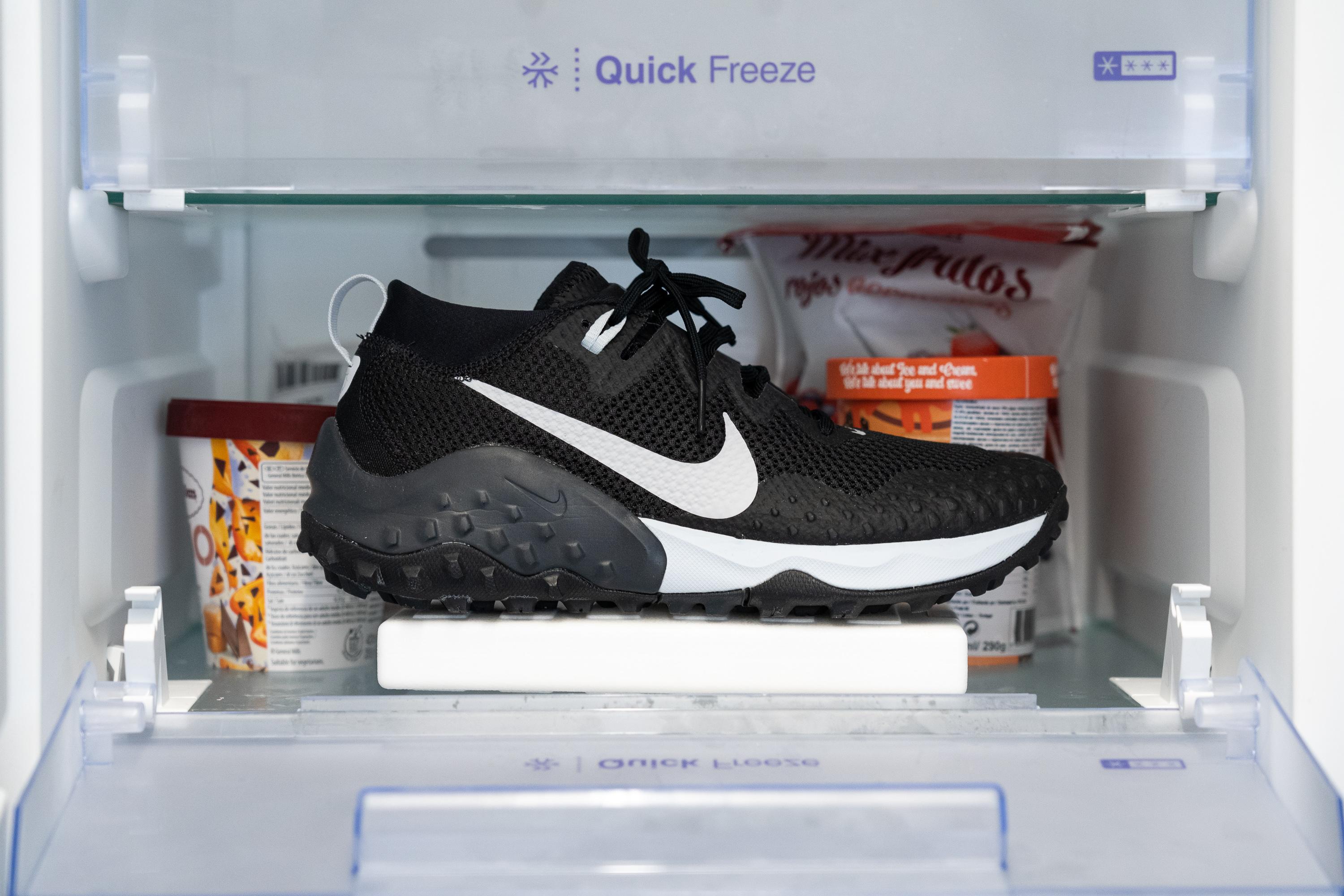
This means you won't have to "break it in" at the beginning of the winter run if the shoe is stored in a cold place.
Feels a bit stiff
Given the insane amount of rubber at the bottom and on the sides of the shoe, we could feel the flexibility lacking in this Nike trail shoe.
But to be sure, we looked at the lab numbers. The flexibility of the shoe at room temperature was 31.1N, which is almost averagely flexible. However, both of the manual tests scored 4 out of 5, meaning that the shoe is rather stiff - both torsionally and longitudinally (5 is the stiffest).
This confirms our initial experience as we are used to trail shoes being a bit more flexible after all.
The ride is average in a good way
This is not a boring shoe. This is not a super-responsive shoe. But its ride was rather enjoyable!
Hit-or-miss gaiters
We kind of love and hate those at the same time. Of course, they can’t replace the regular gaiters but they keep the debris, at least most of it, out.
No rocks were getting into our shoes, but some minor dirt still got collected.

Wildhorse 7 feels heavier than it is
Not trying to compare it to its versatile (Pegasus) or race (Terra Kiger) buddy, but to get a sense of the weight, check out the weight overview:
- Nike Wildhorse 7: 10.5 oz or 299g
- Nike Wildhorse 6: 11.4oz or 323g
- Nike Pegasus Trail 2: 11.1oz or 315g
- Nike Terra Kiger 7: 10oz or 283g
- the average weight across all trail shoes in the RunRepeat database: 10.5 oz (298g).
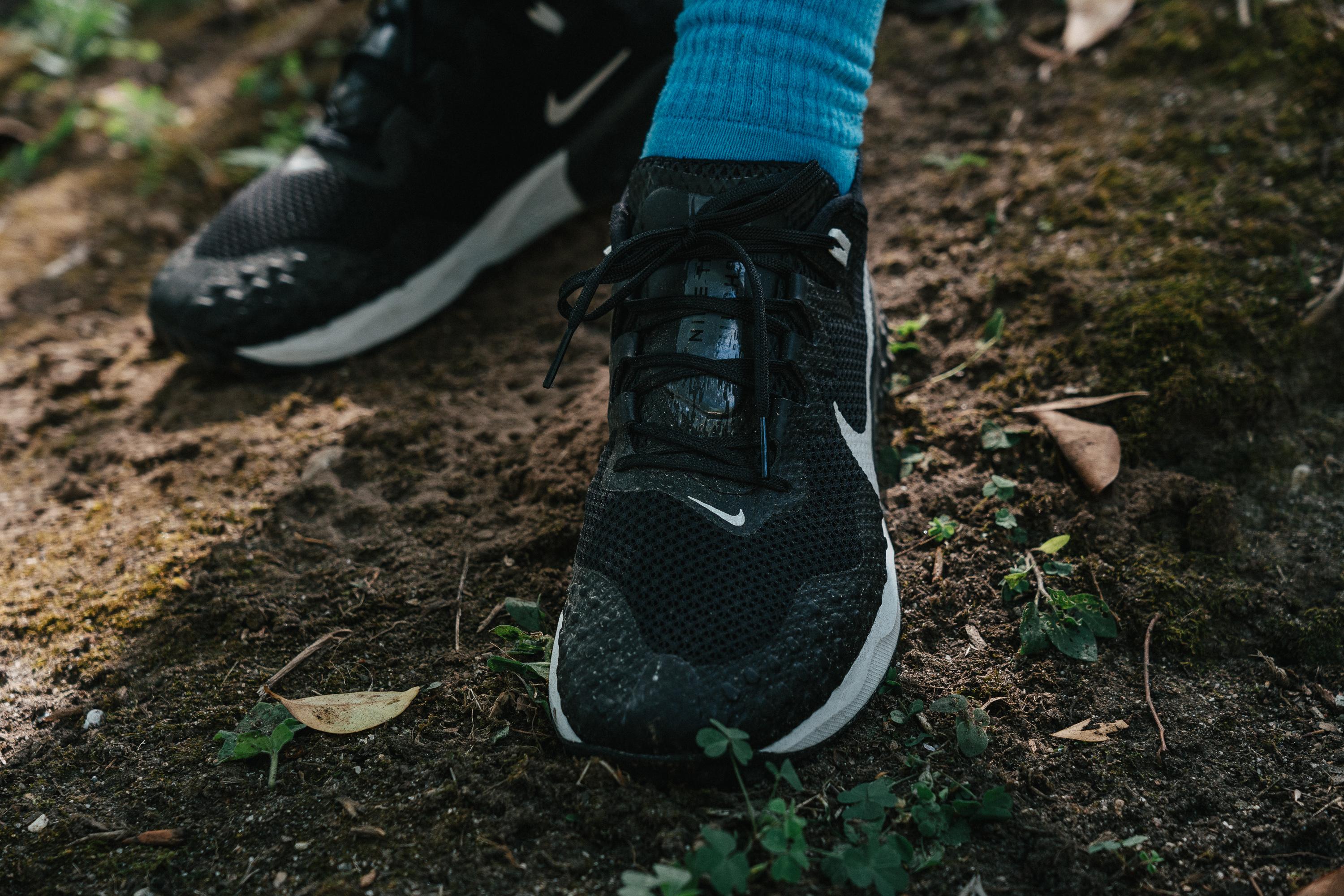
Given that the Wildhorse 7 weighs really close to the average, it might be that it feels heavy due to its looks and balance, rather than it being actually heavy.
Also, we weren't really happy with the heel bulk and the weight that the extra foam and lugs added to the shoe. If these were removed, we believe that the weight would go down considerably.
Wildhorse 7 is not a summer shoe
While the Wildhorse 7 does breathe, it’s only up to a certain level. We tested the shoe in spring, with temperatures up to 61F (16C) and our feet always felt warm. Our socks were far from soaking wet after the run, but this gave us enough warning to stay away from this Nike shoe during summer.
